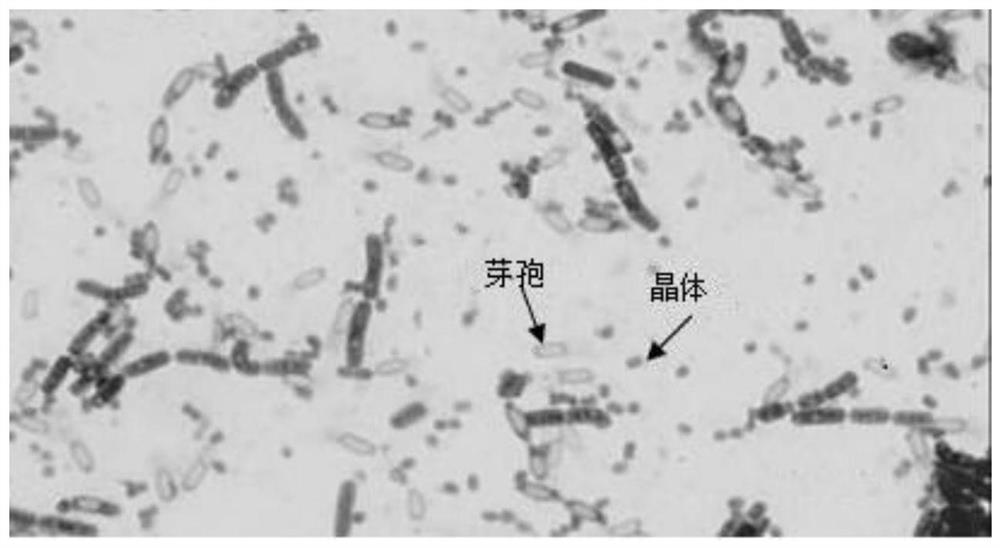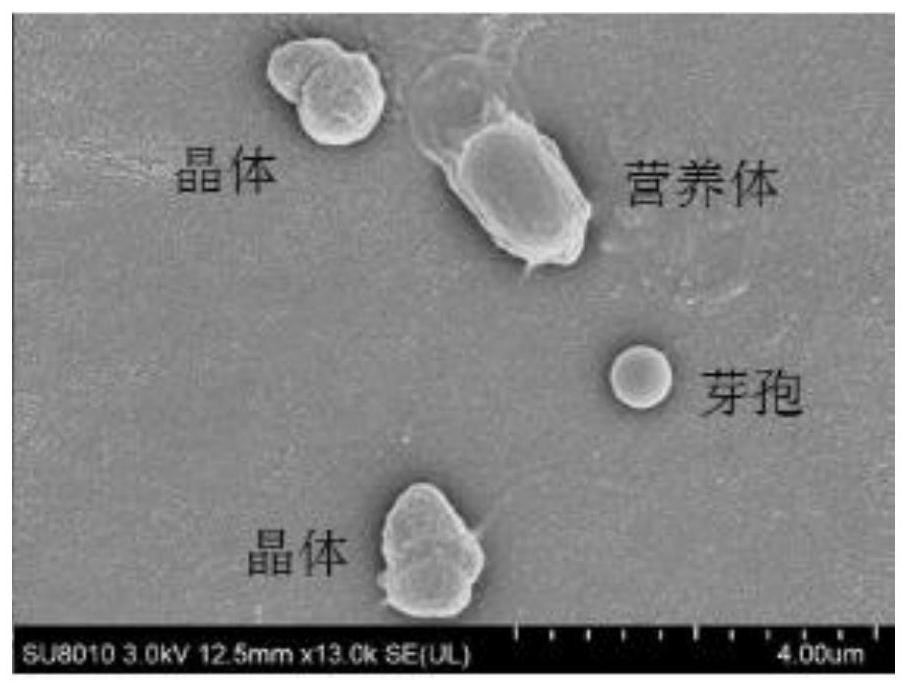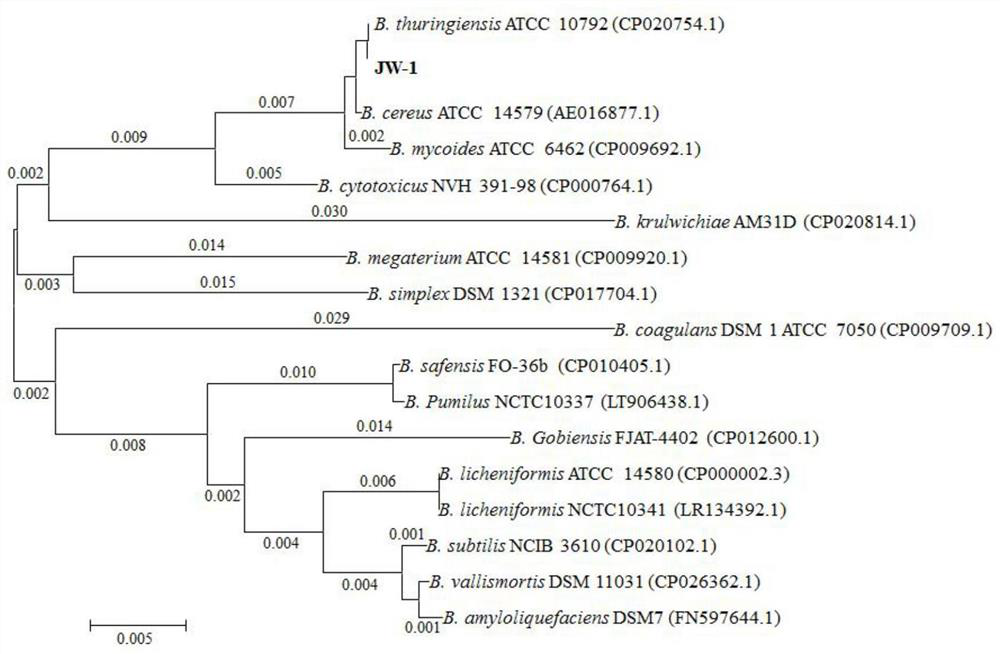A strain of Bacillus thuringiensis and its application
A technology of Bacillus chrysogenum and strains, applied in the fields of application, bacteria, biocide, etc., can solve the problems of less research reports on edible fungus fungus, safety cannot be guaranteed, residues, etc., and achieve good application and promotion prospects and good economics and ecological benefits, good insecticidal activity
- Summary
- Abstract
- Description
- Claims
- Application Information
AI Technical Summary
Problems solved by technology
Method used
Image
Examples
Embodiment 1
[0023] Example 1: Strain isolation and purification
[0024] A 10 g soil sample was taken from 2 cm below the topsoil of Zijin Mountain, Nanjing City, Jiangsu Province, and Bacillus thuringiensis (Bt) was isolated by the sodium acetate-antibiotic method. The specific separation method is as follows: Weigh 1g soil sample, pour it into glass beads and 50mL separation medium (yeast powder 5g / L, peptone 10g / L, sodium chloride 10g / L, sodium acetate 34g / L, pH 7.0) 0.1 mL of penicillin sodium salt and gentamicin sulfate with a concentration of 0.2 g / mL were added to the culture medium, respectively, and cultured on a shaking table (190 r / min, 30 °C) for 4 h. After the cultivation, 10 mL of soil suspension was taken and placed in a water bath at 80°C for 20 min, the soil suspension was diluted 10 times and 100 times respectively, and 0.1 mL of each was evenly spread on the sporulation medium plate (sporomorphic medium: beef extract). 5g / L, peptone 10g / L, agar 20g / L, pH 7.0), the plat...
Embodiment 2
[0025] Example 2: Strain identification
[0026] After strain JW-1 was streaked and cultured on solid medium for 24 hours, it was observed that the colony was milky white, flat, and the surface was dry and dull; it could grow on various mediums such as LB and PDA, and it was aerobic bacteria; through cryo-electron microscopy Observed( figure 2 ) JW-1 strain vegetative body is rod-shaped, spores are round, and paraspore crystals are irregular. The results of Gram staining and API 50CH standardization system test are shown in Table 1. The JW-1 strain can utilize mannitol, D-ribose, D-glucose, D-fructose, D-mannitol, N-acetylglucosamine, Esculin-citric acid, ARBULIN, D-cellobiose, D-maltose, D-trehalose, starch, glycogen and other 13 substances, the rest cannot be used. This result is consistent with Bacillus thuringiensis in the comparison library.
[0027] Table 1 Physiological and biochemical characteristics of JW-1 strain
[0028]
[0029] Note: "+" indicates positive...
Embodiment 3
[0031] Example 3: Identification of strain insecticidal protein genotype
[0032] Using the genomic DNA of the JW-1 strain as a template, a variety of insecticidal protein universal primers were used for PCR amplification, and it was determined that the JW-1 strain contained 6 insecticidal proteins including cry4a, cry4b, cry / 10, cry11, cyt1 and cyt2. genotype.
PUM
 Login to View More
Login to View More Abstract
Description
Claims
Application Information
 Login to View More
Login to View More - R&D
- Intellectual Property
- Life Sciences
- Materials
- Tech Scout
- Unparalleled Data Quality
- Higher Quality Content
- 60% Fewer Hallucinations
Browse by: Latest US Patents, China's latest patents, Technical Efficacy Thesaurus, Application Domain, Technology Topic, Popular Technical Reports.
© 2025 PatSnap. All rights reserved.Legal|Privacy policy|Modern Slavery Act Transparency Statement|Sitemap|About US| Contact US: help@patsnap.com



